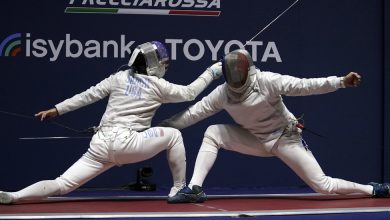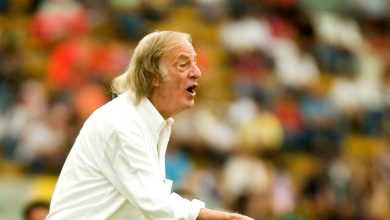A Growing W.N.B.A. Still Boxes Out Some Personalities

Aliyah Boston, one of the most dominant and decorated players in women’s college basketball, was selected with the top pick in the W.N.B.A. draft Monday night.
It’s a big deal — a milestone for any player and a key day for building excitement as a new W.N.B.A. season is soon to begin.
But in the lead-up to the big event, much of the conversation around women’s hoops swirled around two players returning to the college game — not heading off to the pros.
Since Angel Reese made a mocking gesture to Caitlin Clark at the end of the N.C.A.A. Division I championship game between Louisiana State and Iowa nearly two weeks ago, players, fans and internet rabble-rousers have weighed in on racial double standards that exist in the women’s game: How ponytailed, high-scoring white players are lauded for their brashness while Black women who talk trash are vilified for it.
The matter of racial hypocrisy has been a bone of contention in the W.N.B.A., a league where 80 percent of players are women of color but that, players say, has struggled to promote its Black stars. Nneka Ogwumike, the president of the Women’s National Basketball Players Association and one of the league’s most compelling talents, lamented that the style, skill and personalities of Black women drive the league forward, but “when it comes to the perception, the reception and the marketing” of women’s professional basketball, they “don’t get the credit.”
White stars such as Breanna Stewart, Sue Bird and Kelsey Plum have made similarly sharp observations.
Plum, a guard for the Las Vegas Aces, has said that when she entered the league as the No. 1 draft pick in 2017, she felt she was getting preferential treatment from the league’s marketing machinery because she is straight and white. “It’s absolutely a problem in our league. Just straight up.”
Is there any hope that the league will know what to do with Boston, who became a star of college basketball last season during South Carolina’s run to a national title?
She emerged as the consensus national player of the year in 2022 as much for her personality as her skill. During national broadcasts, Boston showcased her playfulness, her dancing and her candid thoughtfulness during interviews, where she selected her words as carefully as she selects the pinks or oranges or blues of her next set of braids.
In a perfect world, she will end up being embraced and promoted as much as her white counterparts in a league still struggling to gain a foothold with the average sports fan.
I want to believe the slew of talented, young Black basketball players taken in the W.N.B.A. draft will end up being as embraced and promoted as much as their white counterparts.
But I can’t say they will.
Ogwumike, who won both the W.N.B.A. title and Most Valuable Player Award while starring for the Los Angeles Sparks in 2016, said that at the start of each season, the league still emphasizes to players the importance of decorum.
“There’s this perception that they want our game to be family oriented and that means no trash talking and no real, like, true natural expression,” she said.
Ogwumike said every year she has pushed back against the demand, couched as respect for the game, “because we’re not allowed to be our full selves within reason,” adding that her male peers in the N.B.A. are “admired and looked up to” for their antics.
Elevating the contributions of the W.N.B.A.’s Black talent is high on the list of ways players would like their league to evolve.
Case in point: The league increasingly markets itself as a cultural trendsetter. Pointing to off-court fashion as one example — think of the camera shots of players clad in boundary-pushing, often gender-bending attire as they head to arena locker rooms — Ogwumike said those who are starting the trends are often not getting their due.
“There are lot of Black players in the W who have been dressing fashionably for a long time and setting trends for a long time,” she said. “But they are not the ones being recognized as trendsetters.”
The tilt toward whiteness can be quantified.
A recent study of W.N.B.A. media exposure on the popular websites ESPN, CBS Sports and Sports Illustrated found a yawning coverage gap between the races. People like me, journalists who cover women’s basketball and care about the untapped potential of women’s sports, need to look in the mirror and think about who we’re focusing on and how we are talking about them.
In 2020, a year when race was at the forefront of the American conversation, Black players won 80 percent of the league’s postseason awards: M.V.P., Rookie of the Year, and Defensive Player of the Year, to name three. And yet, according to the study’s University of Massachusetts researchers, Risa Isard and Nicole Melton, Black players received roughly 50 percent less focused attention than their white counterparts.
That same year, the W.N.B.A. invested more in marketing, committing to spending $1 million annually to highlight performance and diversity, which has directly impacted several Black players such as A’ja Wilson, Betnijah Laney and Jonquel Jones. And as part of a $75 million investment raised in 2022, the W.N.B.A. planned to prioritize marketing and improving its website and app.
Another nugget: The former South Carolina star Wilson, who has won two M.V.P. Awards since being drafted No. 1 overall in 2018 by the Aces, was the only Black player in 2020 to receive more media attention than Commissioner Cathy Engelbert.
In 2021, Wilson was the only Black player to crack the top five in jersey sales, trailing Sabrina Ionescu, Bird, and Diana Taurasi, and ranking just ahead of Stewart.
No, I’m not saying the W.N.B.A. is rife with abject racism. Far from it, the W.N.B.A. is a model in many ways.
That said, the league is simply a microcosm of a broader world that struggles mightily with all of the vexing issues around race.
It’s time to move past the old dichotomies and expand the range of what is possible for female athletes. The W.N.B.A. can help by fully embracing the stories of Boston and Stewart and Wilson, along with all the other players of every hue and identity who strut their stuff in their own distinctive ways.
Let’s see the league showcase that.




